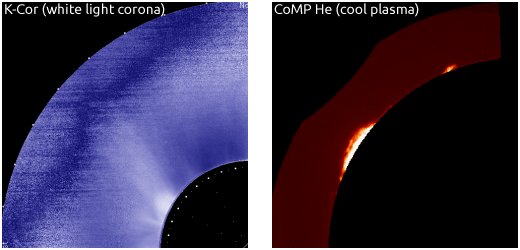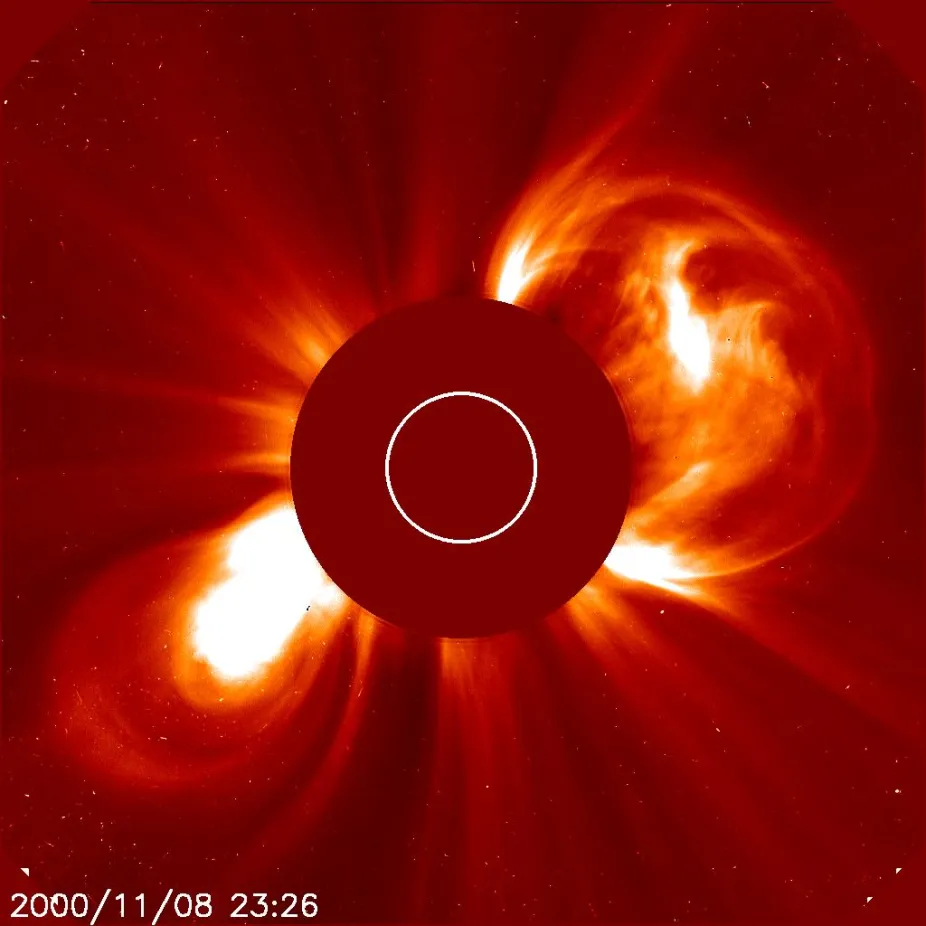Coronal Mass Ejections (CME)
A coronal mass ejection (CME) is an explosive outburst of plasma from the Sun. The blast of a CME carries about a billion tons of material out from the Sun at very high speeds of hundreds of kilometers per second.

A coronal mass ejection (CME) with a prominence eruption viewed from two instruments at NCAR's HAO Mauna Loa Solar Observatory on July 2, 2015.
HAO/NCAR
A CME contains particle radiation (mostly protons and electrons) and powerful magnetic fields stronger than what is normally present in the solar wind. These blasts originate in magnetically disturbed regions of the Sun's upper atmosphere, or corona. Researchers monitor activity in the corona using coronagraphs, which block out the view of the bright solar disk and allow us to see what is happening in the solar atmosphere.
CMEs are Common When the Sun is More Active

The eruption of two CMEs on Jan. 8, 2000 recorded from NASA's LASCO coronagraph.
NASA
CMEs are much more common during the solar maximum phase of the sunspot cycle, when sunspots and magnetic disturbances on the Sun are plentiful. Most CMEs form near sunspots. CMEs are also often associated with solar flares; however, scientists aren't completely sure how the two phenomena are related.
Coronal Mass Ejections Affect the Earth
CMEs travel outward through the solar system. Some are directed toward Earth, though many others miss our planet completely. The radiation storms that are a part of CMEs can be hazardous to spacecraft and astronauts. If a strong CME collides with Earth's magnetosphere, the disturbance can send a burst of particle radiation into Earth's upper atmosphere. As the radiation interacts with gas molecules in Earth's atmosphere, it causes them to release light and essentially to glow, creating the magnificent light shows of the auroras (the northern and southern lights).